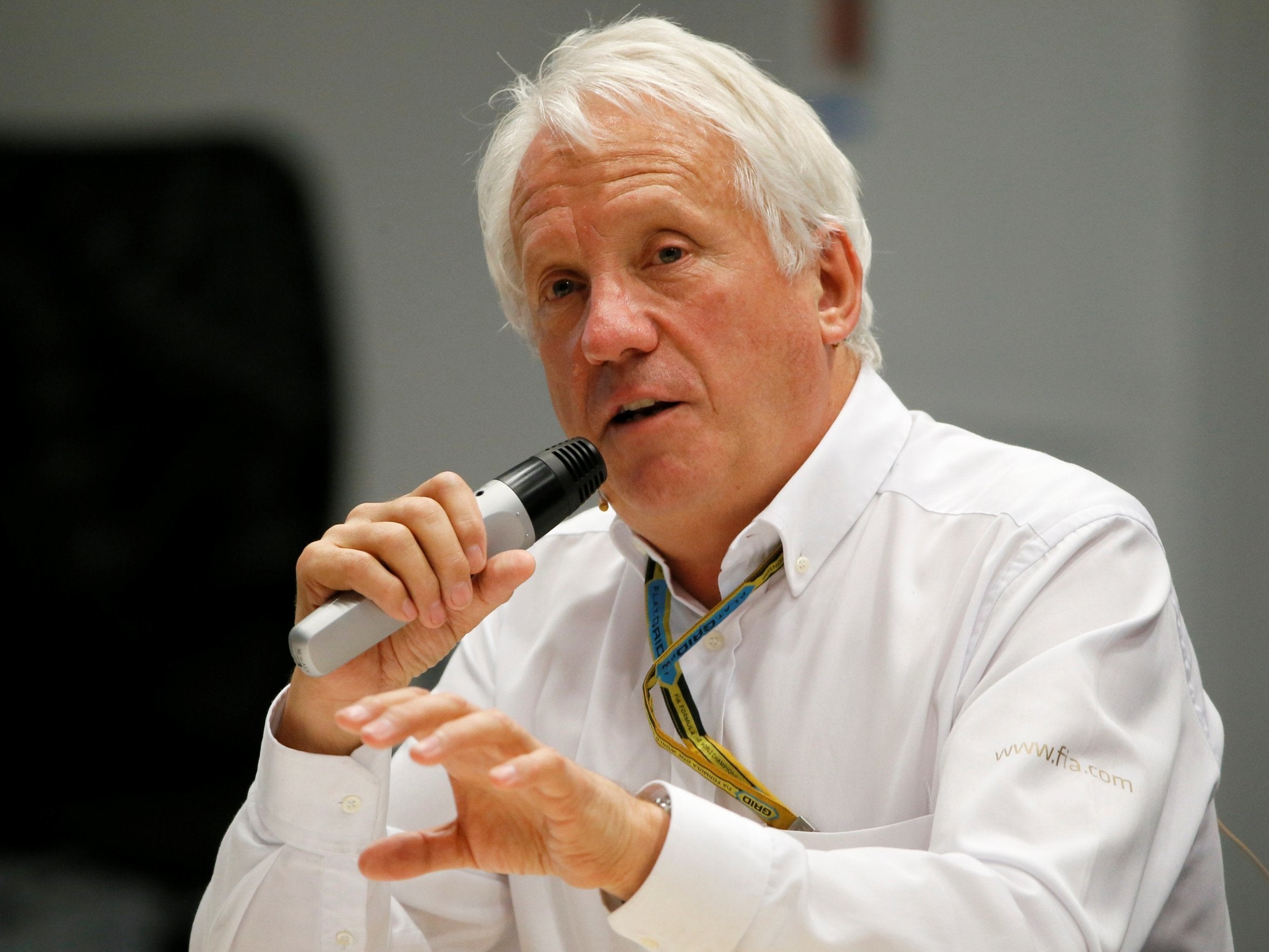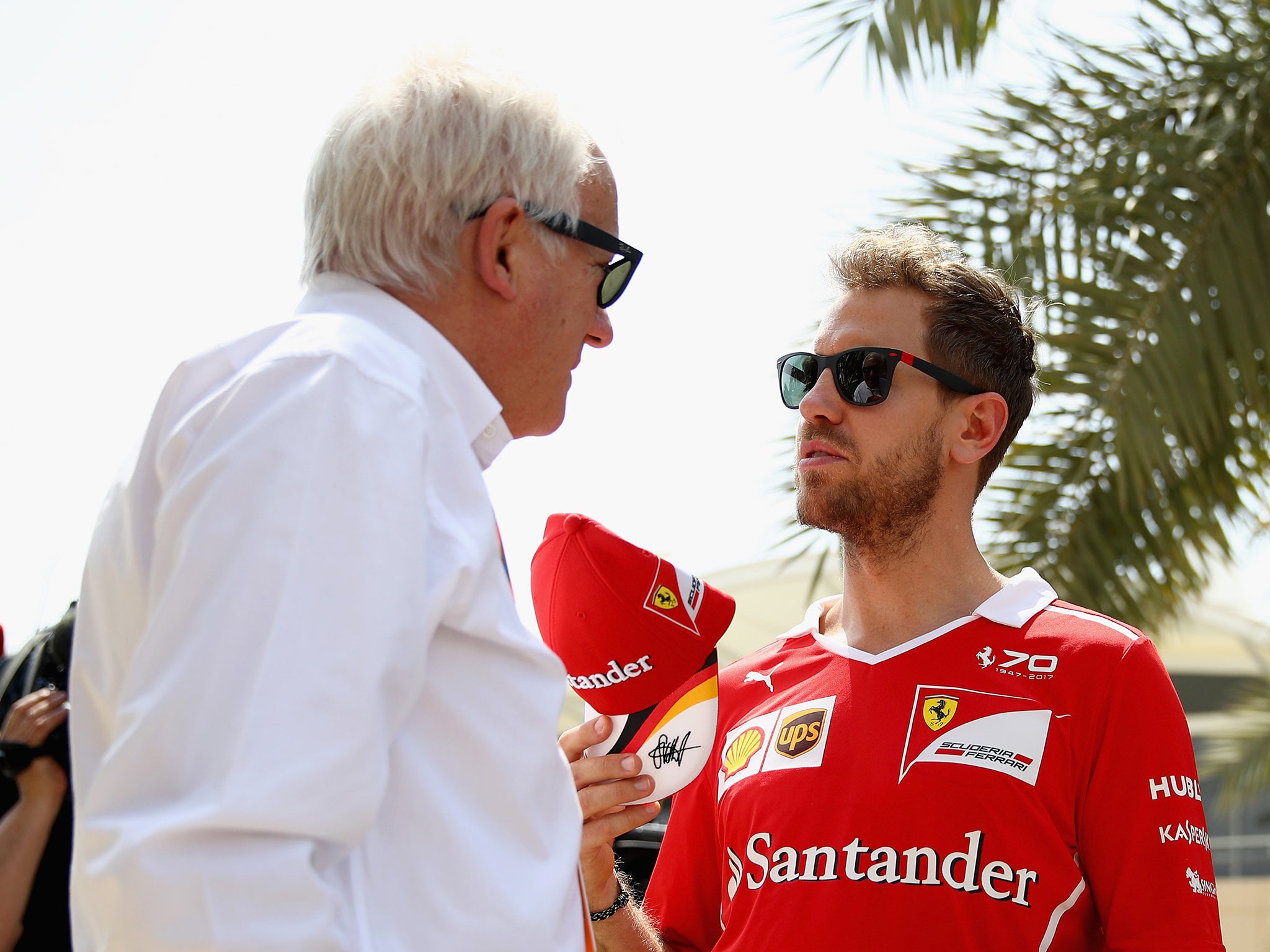Charlie Whiting death: So much more to F1 than simply the man who turned the lights green
Obituary: Whiting first emerged in the F1 paddock 42 years ago as a mechanic for Hesketh, before going on to become one of the biggest advocates of driver and track safety in the sport’s history
Your support helps us to tell the story
From reproductive rights to climate change to Big Tech, The Independent is on the ground when the story is developing. Whether it's investigating the financials of Elon Musk's pro-Trump PAC or producing our latest documentary, 'The A Word', which shines a light on the American women fighting for reproductive rights, we know how important it is to parse out the facts from the messaging.
At such a critical moment in US history, we need reporters on the ground. Your donation allows us to keep sending journalists to speak to both sides of the story.
The Independent is trusted by Americans across the entire political spectrum. And unlike many other quality news outlets, we choose not to lock Americans out of our reporting and analysis with paywalls. We believe quality journalism should be available to everyone, paid for by those who can afford it.
Your support makes all the difference.Charlie Whiting was - to the casual Formula One spectator - the white-haired man who turned the lights green.
To the world of motorsport, he was so much more.
A fascination with motorsport stemmed from his youth, when he spent evenings and school holidays fixing up cars with his brother Nick in Kent.
Passion and vocation led to the opening foray into Formula One in 1977 working for Hesketh Racing, the start of more than four decades in the sport.
Hesketh - which gave James Hunt his first drive in F1 - would go on to fold in 1978, and Whiting went on to join Brabham, then owned by Bernie Ecclestone.
He rose through the ranks of the team and in the sport and would go on to serve as chief mechanic for Nelson Piquet at his championship successes in 1981 and 1983 and later chief mechanic for the team.
When Ecclestone sold the team, the lure of the poacher-turned-gamekeeper transition proved too strong and Whiting took up a role within the sport's governing body, the FIA, eventually becoming race director in 1997.
Over the last two decades, Whiting essentially became the sport's lead referee, analysing incidents, detecting wrongdoing and taking a lead in promoting safety within the sport.
One of the more notable incidents in his career came Stateside in 2005, when all but six drivers completed the United States Grand Prix owing to tyre issues.

Concerns were raised about the safety of tyres brought by Michelin to the Indianapolis Motor Speedway and Whiting was asked to alter one of the corners which would allow seven teams to race safely.
He refused, leading to the farcical sight of 14 cars retiring after the parade lap.
In a letter to the teams at the time, he said: "To change the course in order to help some of the teams with a performance problem caused by their failure to bring suitable equipment to the race would be a breach of the rules and grossly unfair to those teams which have come to Indianapolis with the correct tyres."
But fairness and safety were key to Whiting, so often referred to as Charlie within the paddock and over the radio, particularly when drivers thought an incident warranted further investigation.

He would rigorously inspect circuits, checking a range of new circuits on the GP calendar for suitability, as well as looking at how safety could be improved within the car.
Whiting is credited with being among those who backed the introduction of the halo device, which helped Charles Leclerc avoid serious injury after a huge accident at last year's Belgian Grand Prix.
With more than 400 Grands Prix under his belt, Whiting was part and parcel of the sport.
Speaking about his role in 2017 to Top Gear magazine, he said: "I still love it. The buzz is extraordinary. "It's rare I find myself thinking 'well, this is boring'."
PA

Join our commenting forum
Join thought-provoking conversations, follow other Independent readers and see their replies
Comments